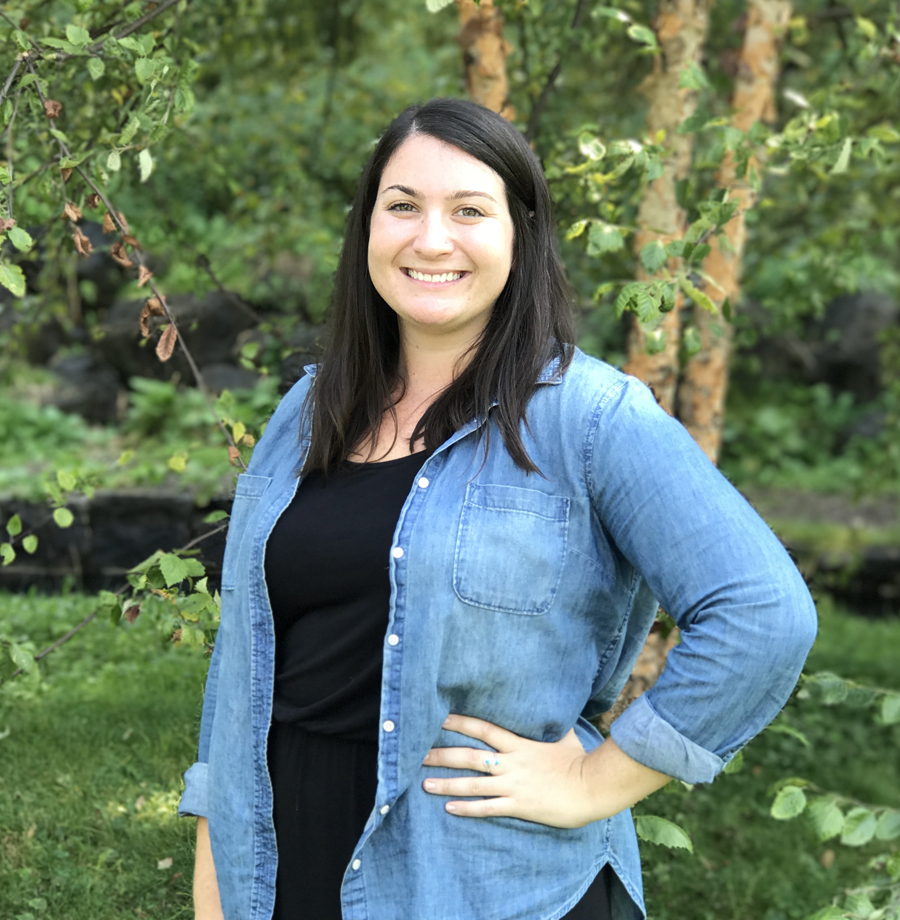
Why You Should Help Protect Native Pollinators and Grow Native Plants
By: Mary Godnick - Adirondack Council Marketing and Communications Associate
Friday, March 20, 2020
There is no denying our world has been turned upside down in the past few weeks. It seems that you can't really plan on anything at the moment. But even in these uncertain times, there is one thing for sure, soon the grass will grow green, wildflowers will begin to show their heads, and it will be SPRING one way or another.
My coffee table is still covered in marked-up seed catalogs, sketched out garden plans, and books about how I can steward a little ecosystem that serves the Earth and provides me with food.
One topic I am hearing a lot about in my quest to learn more about growing my own food is the role that native pollinators and native plants play in sustaining a healthy ecosystem.
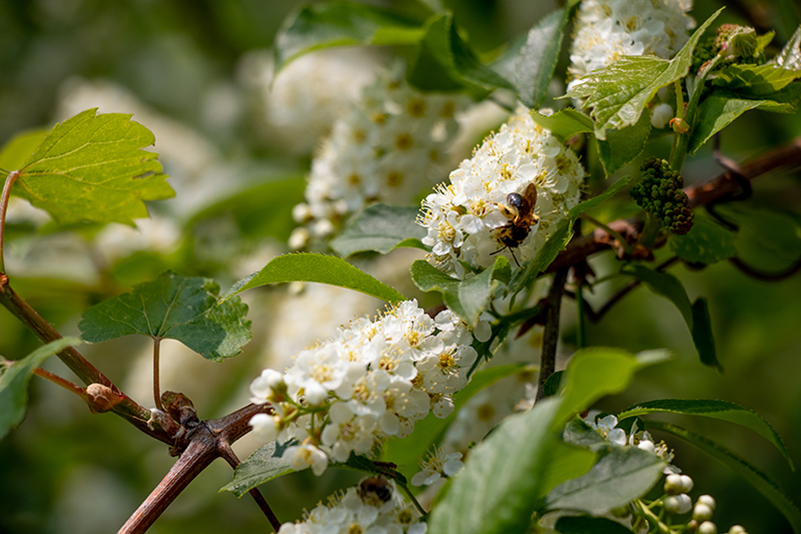 Flowering cherry tree variety along the Boquet River
Flowering cherry tree variety along the Boquet River
What are Native Plants?
According to the US Department of Agriculture, native plants are “generally well-adapted to an area’s growing conditions, can thrive with minimum attention, are good sources of nectar and pollen for native bees, and are usually not “weeds” (i.e. not invasive). They are plants indigenous to a given area in geologic time. They have occurred naturally without human introduction in a region, ecosystem, or habitat.
A few examples of iconic native plants in the Adirondacks include:
- Cardinal Flower
- Blue flag Iris
- Violet
- Eastern (Canadian) hemlock
- Balsam fir
- Black elderberry
- White birch
- Sugar maple
- Tamarack
- Ostrich fern
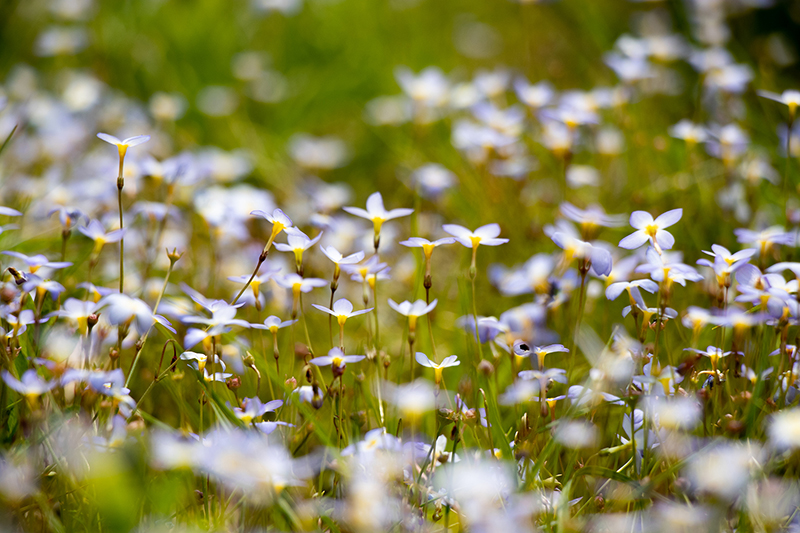 Bluets near a mountain summit
Bluets near a mountain summit
Why are Native Plants beneficial?
Many of the reasons people love living in and visiting the Adirondack Park is our vast wild places. Our lush forests, riverbanks lined with flowering and fruiting bushes, and valleys covered in wildflowers.
Without native plants, the Adirondacks would look a lot different. Fishing and hunting would be impacted. The vegetation that grows on your favorite mountain summits and lakes would be different. And the ability of farmers to produce healthy food would be challenged.
And we need them, not just in our “wild” places. Across the United States, greater than 80% of land is privately managed, which means there is an opportunity to restore large amounts of native plants.
They provide food and shelter for wildlife
The native nuts, seeds, and fruits produced by these plants offer essential foods for all forms of wildlife, not just pollinators. And certain iconic wildlife and pollinators need native plants. For example, the monarch caterpillar can only digest milkweed and depend on it to survive.
One study found that native oaks can support more than 530 species of caterpillars that will grow into butterflies and moths, while a non-native butterfly bush supports only one species. Overwintering songbirds like cedar waxwings and American robins need a food source through the winter. Waxy coated berries like northern bayberry and winterberry are an important source of nutrition during the hardest months. It’s been documented that yards with more non-native plants have fewer insects available for chickadees, reducing the population growth in those areas.
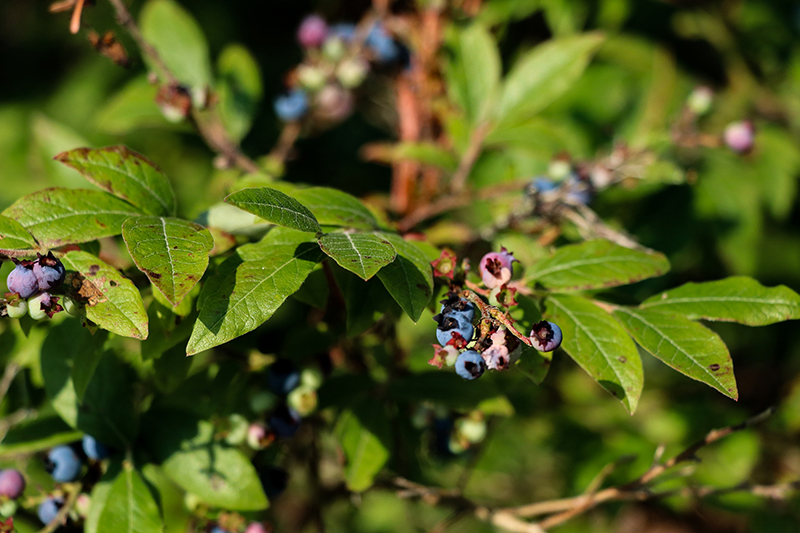 Native blueberries on top of Bald Mountain in Old Forge
Native blueberries on top of Bald Mountain in Old Forge
Adapted for soil and climate
Native plants are meant to live in the area where they grow. They generally will grow well in the soil condition and climate where they belong.
Often need less water
If a plant is happy in its climate, it doesn’t need as much water. The regular rainfall and weather patterns of the region it is native to should be able to sustain the plant.
But wait, there are bees and butterflies on my Zinnias and birds in my yard?
Yes! Non-native plants play an important role in our lives. They give us healthy food to eat, and herbs and flowers to enjoy. Growing annual plants can be a way some people connect with nature and share traditions.
Annual and non-native plants in your garden support generalist pollinators, which is important. However, research shows that wildlife and pollinators prefer the plants they have evolved to be around. In one study, it was found that chickadees generally do better in yards with native plants. Non-native yards are “less attractive to reproductive individuals, and individuals that did attempt to reproduce in nonnative yards had lower reproductive success.”
You will see a greater variety of native butterflies in your yard if you incorporate native plants. Another study showed that the proportion of specialist butterflies and moths was about “five times larger across native species within sites compared to non‐native plant species.”
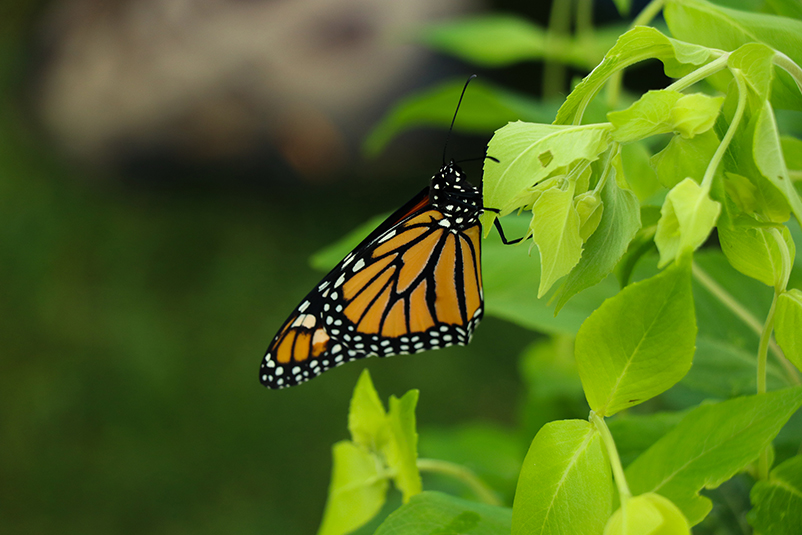 Monarch butterfly
Monarch butterfly
Protected Wildlands and Native Pollinators and Plants
As a conservationist, hiker and paddler, I can’t help but think about the role our wildlands serve in preserving populations of native pollinators and plants. Just as they are home to the moose, loon, and marten, large intact landscapes provide a safe haven for keystone species of native pollinators.
It’s clear that native pollinators and plants are critical to the vitality of the things that make the Adirondacks wild and unique; rare wildlife, wildflowers and trees, and sustainably grown food for our communities and beyond.
What are Native Pollinators?
Native pollinators are insects and animals that have evolved over time alongside native plants. They eat nectar from plants and move pollen from plant to plant, helping them reproduce. Pollinators include birds, bats, butterflies, moths, flies, beetles, wasps, small mammals, and bees, which are probably the most well-known. New York State alone is home to approximately 378 native bee species.
Types of Pollinators
Generalist pollinators visit many types of plants. Meaning, there is less of a chance for pollen of the same species to fertilize each other, which many plants need to reproduce. They are important and are what you see feeding on your beautiful annual plants in your garden. Seventy-five percent of bees are generalist pollinators, and this includes honeybees.
Specialist pollinators have evolved to have a specific relationship with one type of pollen found on one type of plant. Their lifecycle is synced with certain plants and they come out of their nests when “their” plants are flowering. For example, the “squash bee” and “sunflower bee” seek out only their respective types of food. While other “generalist” pollinators do visit these plants, they aren’t the most effective pollinators for these types of vegetation. Twenty-five percent of bees are specialist pollinators.
Is your favorite native bee a generalist, or specialist? Find out in this Database of bees.
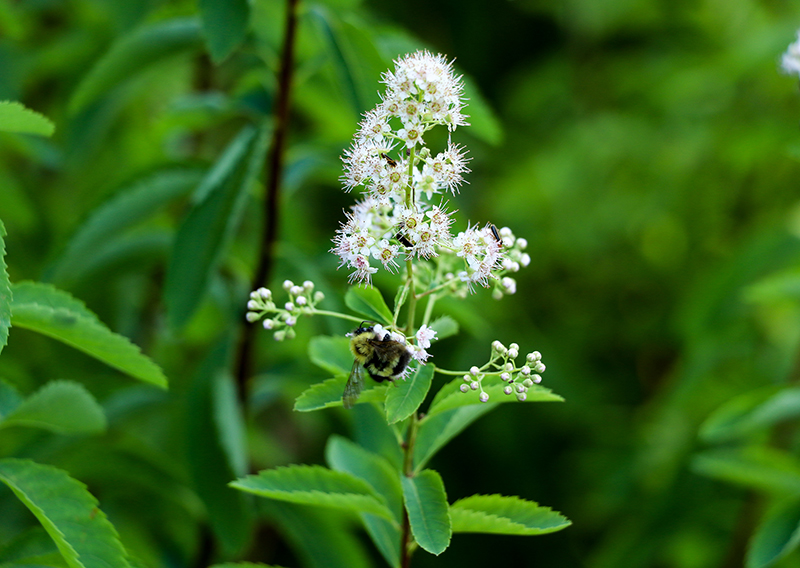
Why are Native Pollinators Important?
It’s estimated about 90 percent of all plants rely on pollinators to produce seeds for the next generation of plants. They are critical to the food we eat, lumber we build with, fiber we wear, alcohol we drink, and things that keep us healthy.
Thirty-five percent of the world’s crops — amounting to $216 billion per year — depend on pollination.
We need specialist pollinators. Domestic honeybees (generalists) just aren’t built to pollinate all the different types of plants that are important to our ecosystems. Their mouthparts, legs and feeding habits aren’t designed to effectively collect and transfer the pollen of the same species from one plant the next.
Our good friend the bumblebee (a native bee in the Adirondacks) does what is called “buzz pollination,” or sonication where they rapidly contract their indirect flight muscles to produce vibrations that loosen pollen in flowers. Certain types of plants like tomatoes, peppers, cranberries, and blueberries depend on this “buzz pollination” to grow large and productive fruit.
Honeybees as Pollinators
Sometimes, managed honeybee colonies are used to aid in pollination among crops. Many large-scale farms that produce a single crop, like almond growers, (I’m sure you’ve read this) depend on honeybee pollination for their product.
But research shows that relying on only honeybees is largely unsustainable. One study that compared the pollination of 40 crops by honeybees and native pollinators found plants primarily pollinated by native pollinators had twice as much fruit. Stating that only 14% of test plots visited by honeybees significantly increased production.
While it is convenient that honeybee colonies can be moved around, they aren't always the best-suited animal for the job. For example, some native bee species, like mason and bumblebees, are active when conditions are too cold and wet for honeybees.
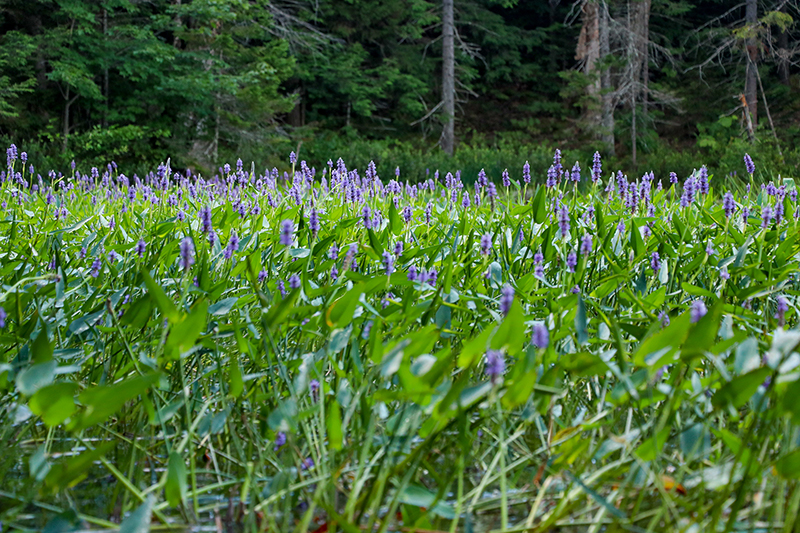 Pickerelweed on the Moose River
Pickerelweed on the Moose River
Benefits Beyond Pollination
Having an ecosystem that is beneficial to native pollinators extends beyond the pollination they provide.
Deter pests
Parasitic wasps have been known to use tomato hornworms as hosts, and self-manage the damage those little green monsters can have on the Solanaceae plant family. A good reason to attract wasps to your garden.
Ladybugs are a known predator to aphids. You can attract native ladybugs to your garden with aster-family flowers and composite flowers like chicory.
A food source
Butterflies, moths and caterpillars are an important food source for many birds, snakes, toads, and other wildlife in the Northeast.
What is Threatening Native Pollinators and Native Plants?
Habitat Loss
One study in the Adirondacks looked at the impacts of various logging techniques on native pollinator abundance and diversity. Preliminary results show a difference in pollinator vitality in areas that have used logging methods that significantly change the landscape of a forest.
Laura Burkle, an ecologist at Montana State University revisited data in Carlinville, Ill from scientist Charles Robertson a century ago. She found that of 109 recorded species of bees, over half have disappeared from the area. Citing the loss of nesting sites as a major reason.
Pesticide Exposure
Pesticide and herbicide use on crops is highly dangerous to both honeybees and wild pollinators. Unfortunately, recommended mitigation techniques to reduce pesticide impacts on pollinators focus only on honeybees.
For example, it’s suggested to spray pyrethroid insecticides in the early morning or late afternoon when honeybees are less active. But this practice is actually worse for native bumblebees who are most active during those times.
Also, it’s been found that native bees have a much harder time reproducing when foraging next to crops treated with neonicotinoids, agricultural insecticides.
Climate Change
Some native bees depend on just a few kinds of flowers for food. Which means those flowers must be blooming when the bees come out of their nest searching for food. Increased fluctuating weather patterns and temperatures impact the flowering cycle of those plants.
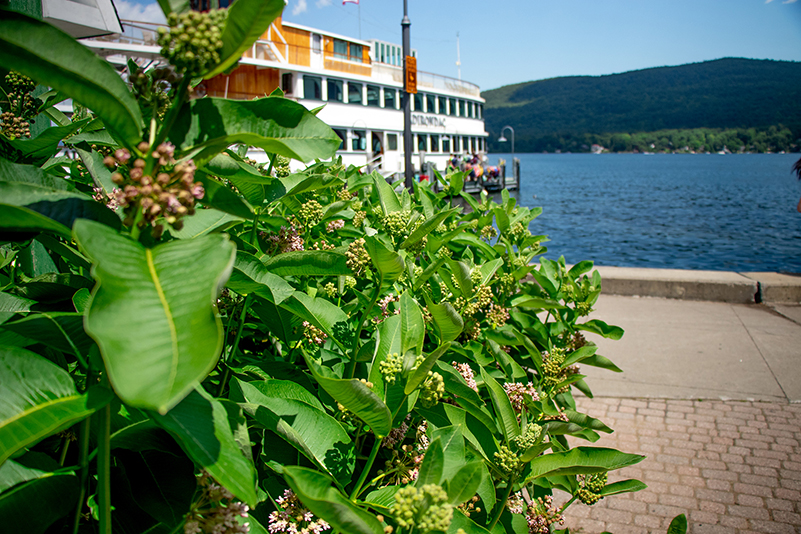 Milkweed planted in a pollinator garden in Lake George
Milkweed planted in a pollinator garden in Lake George
How You Can Help Native Pollinators and Plants
Why does this matter? Loss and fragmentation of habitat and food sources, invasive species and pesticide use are causing a decline in native pollinators and wildlife. A few ways we can help support native pollinator and native plant populations...
Advocate to preserve wilderness areas
Nationally, our wild places are shrinking. The good news is in the Adirondacks our wild places are growing. By continuing to preserve millions of acres of connected, valuable habitat in the Adirondacks, we are providing pollinators a home and rest-stop on their travels.
Also, we need to implement wildlife-friendly logging and development practices. Right now, in the Adirondacks, we have an opportunity to
Conservation practices on private lands like farms offer invaluable protection for native plants and pollinators. There are some federal, state and private financial assistance programs that support protecting habitats such as protecting land under conservation easements, planting hedgerows, using a diversity of native forage for livestock, and replanting riparian buffers of native plants and trees. Advocate for funding and better accessibility of these programs.
Gather Data
In order to know how pollinators and native plant species are faring, we need baseline data to compare with. Ask your representatives to support long-term monitoring. You can also join in on citizen science efforts with the free iNaturalist app.
Let your Lawn be Wild and Free
Let your lawn grow a little longer and allow “weeds” like clover to grow that provide valuable food to pollinators grow.
Additionally, make sure the products you’re using in your yard aren’t killing pollinators. Opt-out of using pesticides and herbicides.
Allow areas of undisturbed groundcover. Seventy percent of native bees live in the ground. Leave untouched twigs, dead wood and bare soil for them to nest.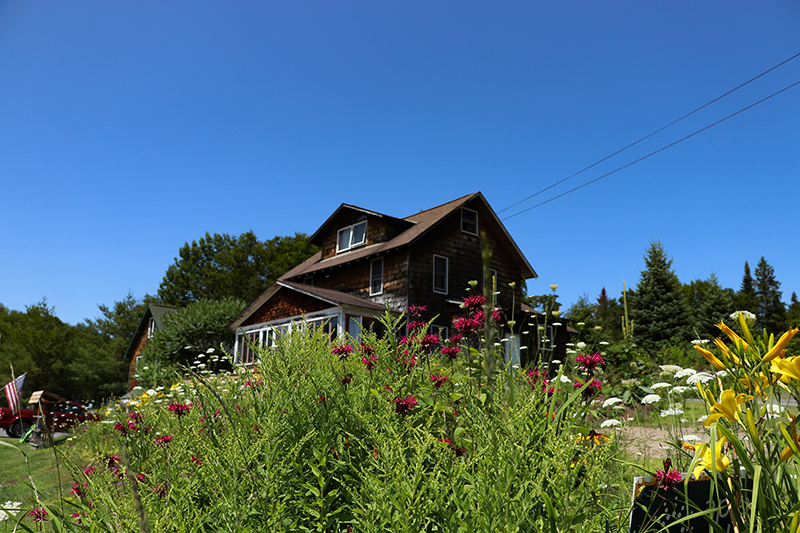 Bee Balm planted in a native and perennial garden at Cloudsplitter Outfitters in Newcomb, NY
Bee Balm planted in a native and perennial garden at Cloudsplitter Outfitters in Newcomb, NY
How to Invite Native Pollinators Back to Your Property
- Leave native plants on your property to thrive, and help reestablish them in your landscaping and garden. Check with your local Cooperative Extension or state conservation department for lists of native plants and information on annual native plant sales. Some suggestions for deer resistant and shoreline buffer native plants.
- Consider planting edible native plants through your vegetable garden. By inter-planting a variety of species, your other crops will benefit. Use native fruiting and flowering perennials as a way to control pests, provide fruit and shade.
- Make sure you have the right varieties. As non‐native plants support significantly fewer caterpillars even when the non‐natives were close relatives of native host plants.
- If you’re currently renting space but want to help, advocate for more native species in your public places. Adirondack Action is currently accepting applications for gardens in community spaces to support pollinators. You can also gift native trees, shrubs and flowers to loved ones that like to garden, or donate to projects that are working to preserve wildlands.
I hope that this knowledge inspires you to think about how you can help native pollinators and help maintain native plants. It's currently uncertain how workplace closures will impact the availability of locally grown transplants. There are many things you can do for native plants and pollinators without outside help, like leaving leaf and plant litter, cutting your lawn less, and letting an area of your yard go wild.
Find Native Plants Near You:
Cornell Cooperative Extension + Adirondack Park Invasive Plant Program
Adirondack Action Pollinator Project
|

